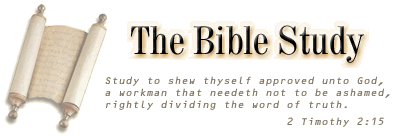Of The War-Horse Symbol
And I saw when the Lamb opened one of the seals, and I heard, as it were the noise of thunder, one of the four beasts saying, Come and see. And I saw, and behold a white horse: and he that sat on him had a bow; and a crown was given unto him: and he went forth conquering, and to conquer. (Revelation 6:1-2)
In reading the first four seals, the student of this prophecy must have been struck by the symbolization of which the war-horse is the root. What does this sign mean? What use does the Spirit of Christ make of the horse symbol in prophecy? What does he signify by it, and what did he intend it to signify when he exhibited it before John, now white, then red, black, and pale?
In Isaiah 63:13, the Spirit says, that Yahweh led the whole tribes of Israel "as a horse in the wilderness that they should not stumble." This use of the animal is making it the symbol of a nation, or people. Again, in Zech. 10:3, the Spirit saith, "Yahweh Tz'vaoth hath visited his flock, the house of Judah, and hath made them as his goodly horse in the battle." Thus, when Messiah comes he will ride Judah as his war-horse. From these instances, then, it is scriptural to say that the Spirit in prophecy sometimes represent a people by a horse.
Now, it is also scriptural to say that where He finds peoples representing themselves by animals, he adopts their symbols, and speaks of them by their own signs. Thus, the Persians represented their nation by a Ram; the Macedonians theirs by a Goat; the Romans theirs by a Horse, a Dragon, an Eagle; and the Franks their people by Frogs. The Spirit of Christ that was in the prophets has appropriated all these in speaking prophetically of each. The Ram-people and the Goat-people are largely treated of in the book of Daniel; and the Horse-people, Dragon-people, Eagle-people, or Greco-Latin, or Roman people; and Frog-people, figure conspicuously in the book of Revelation.
There can be no reasonable doubt of the Roman people having symbolized themselves by a war-horse. This is clearly shown by the Rev. E. B. Elliott, A. M., in his work on the apocalypse, both by quotations from Latin authors, and from ancient Roman coins. The Romans claimed to be the offspring of Mars, their god of war, whom they honored and worshipped by horse-races and horse-sacrifices in spring and fall from the time of Romulus, the founder of their state, down to the time of the emperors. The horse was also, according to Pliny, one of the ancient Roman war-standards; so that Mars, the Horse, and the Roman people, had an established and recognized affinity.
The introduction of the Roman Horse into the symbolization of the first four seals as representative of the Roman people, was peculiarly appropriate. It was their symbol as pagans - worshippers of their father Mars through the horse which they sacrificed to him. It represented the pagan Roman people, who were to be ridden by the judgments of the first, second, third and fourth seals in retribution for the cruelties they perpetrated upon the seed of the Woman in their fight of faith against idolatry during the first.
Now the various colors of the horses indicate certain diverse conditions of the political times typified by the horses. White is emblematic of peace; red of war, black of lamentation, mourning and woe; pale green of famine and pestilence. From the time of John, the pagan body politic, with whom he and his brethren and fellowservants were contending to the death, was to pass through seal-periods of a peaceful onslaught upon their superstitions, war, famine and pestilence, in the order of symbolical enumeration. The first seal-period, then, was to be a period of internal peace and prosperity to the pagan Roman world; and this period is only found in pagan Roman history subsequent to the death of Domitian, between that event and the accession of the emperor Commodus, A.D. 180. This, then, is the chronological beginning period of the seals. The Lamb begins the unrolling of the scroll by causing the removal of the "timid inhuman Domitian," A.D. 96; and the introduction upon the arena of a new class of imperial agents, who should promote the material prosperity and happiness of the people. John saw the change and partook of its benefit. On the opening of the first seal, he returned from exile. He lived through the short reign of Nerta; and died, according to the consent of antiquity, in the early part of the reign of Trajan.
Source: Eureka - volume 2
